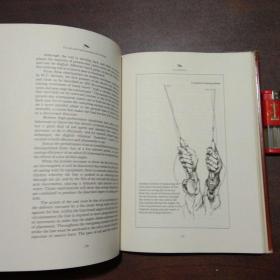
Content:
Introduction: Fly fishing, an ancient and revered sport, has captivated anglers around the world with its finesse and elegance. One of the fundamental skills required to excel in this sport is mastering the art of hook tying. Whether you are a beginner or an experienced angler looking to refine your technique, learning how to tie a fly fishing hook is crucial. In this article, we will delve into the essential techniques for hook tying, providing you with a comprehensive guide to help you become a proficient fly fisherman.
Understanding the Basics: Before diving into the nitty-gritty of hook tying, it is important to understand the basics. A fly fishing hook is designed to mimic the movement and appearance of natural prey, such as insects or baitfish. It consists of a shank, which is the straight part of the hook, and a point, which is the sharp end used to penetrate the fish's mouth. The shank can be straight or curved, and the point can vary in length and style.
Selecting the Right Hook: Choosing the right hook is crucial for successful fly fishing. Hooks come in various sizes, shapes, and styles, each designed for specific types of fish and fishing conditions. When selecting a hook, consider the following factors:
- Size: The size of the hook should match the size of the prey you are trying to imitate. Larger hooks are suitable for larger fish, while smaller hooks are better for smaller fish.
- Shape: Different shapes of hooks are designed to mimic different types of prey. For example, streamers have longer, more pronounced points, while nymphs have shorter, more subtle points.
- Style: Hooks come in various styles, such as straight, offset, and down-turned. The style you choose depends on the type of fishing you are doing and the behavior of the fish you are targeting.
Gathering Your Materials: To tie a fly fishing hook, you will need the following materials:
- Hook: Choose the appropriate hook size and style for your fishing needs.
- Thread: Use a monofilament or fluorocarbon thread that matches the color of your fly.
- Tying materials: These include hackle, dubbing, and other materials used to create the body and hackle of the fly.
- Scissors: A sharp pair of scissors is essential for cutting thread and trimming materials.
- Forceps: These are used to manipulate the thread and materials while tying the fly.
The Basic Knots: There are several basic knots that are commonly used in fly fishing. Here are three essential knots to learn:
- The Improved Clinch Knot: This knot is simple to tie and provides a strong connection between the hook and the thread.
- The Palomar Knot: This knot is known for its strength and ease of tying, making it a popular choice for fly fishing.
- The Surgeon's Knot: This knot is used to join two pieces of thread or to attach a leader to a fly line.
Tying the Fly: Now that you have learned the basic knots, it's time to tie the fly. Here is a step-by-step guide to tying a simple fly:
- Start by threading the hook through the eye of the hook and wrapping the thread around the shank.
- Choose the appropriate materials for the body and hackle of the fly.
- Wrap the thread around the materials to create the body of the fly.
- Secure the materials in place by pulling the thread tight and trimming any excess.
- Wrap the thread around the hook shank to create the hackle.
- Secure the hackle in place by pulling the thread tight and trimming any excess.
- Tie off the thread with an improved clinch knot or another suitable knot.
- Trim the tag end of the thread and ensure the knot is secure.
Practice Makes Perfect: Like any skill, hook tying requires practice. Spend time practicing different fly patterns and knots to improve your technique. Experiment with different materials and styles to find what works best for you. Remember, the more you practice, the more proficient you will become.
Conclusion: Learning how to tie a fly fishing hook is a vital skill for any angler looking to excel in the sport. By understanding the basics, selecting the right hook, gathering the necessary materials, mastering the basic knots, and practicing regularly, you will be well on your way to becoming a proficient fly fisherman. Remember, the key to success is patience, practice, and a passion for the sport. Happy fishing!












